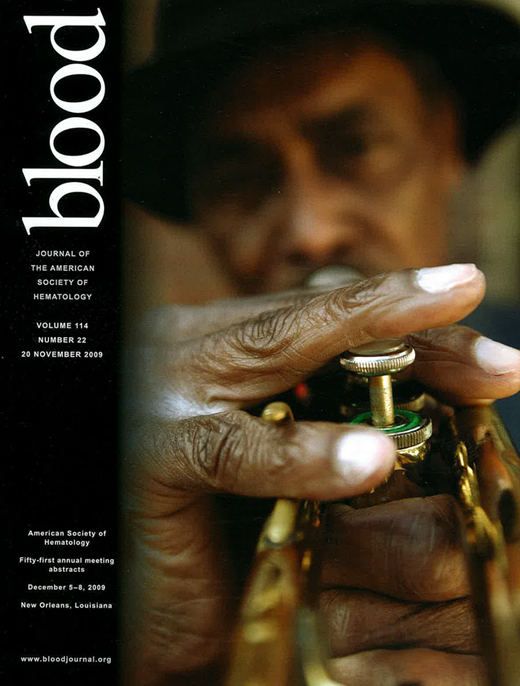Abstract
Abstract 3462
Poster Board III-350
Hairy cell leukemia (HCL) is a chronic B cell lymphoproliferative disorder characterized by marked splenomegaly, pancytopenia and diffuse infiltration of the spleen, liver, and bone marrow by tumor cells exhibiting a hairy appearance. The normal cellular counterpart of HCL is still debated. A study based on genome-wide gene expression analysis suggested that HCL is derived from memory B cell (Basso K. et al., J Exp Med 199:59-68, 2004). Despite multiple efforts to dissect the complex biology of HCL, the pathogenesis of this disease remains largely obscure. Recently, a novel layer of biological complexity has been added by the discovery of microRNA (miRNA). To date, miRNAs have been implicated in development and cancer. We have previously shown that miRNAs are expressed in a stage- or transformation-specific fashion in B cells (Basso K. et al., Immunity 744-52, 2009), suggesting that they might play specific developmental and pathologic roles. Although miRNA expression signatures have been derived for several hematological malignancies, assessment of miRNA expression in HCL has not yet been reported. Here, we investigated the role of miRNAs in HCL pathogenesis and the possibility of using miRNA expression signatures as a diagnostic tool to distinguish HCL-like disorders, especially Splenic Lymphoma with Villous Lymphocytes (SLVL). We evaluated the expression of 470 human miRNAs in peripheral blood-derived CD19+ B cells from 8 HCL, 5 SLVL and 9 Chronic Lymphocytic Leukemia (CLL) patients by a commercial miRNA array platform (Agilent). For comparison, 6 each naïve, germinal center and memory B cells from healthy donors were also included in the analysis. Unsupervised hierarchical clustering of miRNA expression profiles generated from HCL, SLVL and CLL showed that HCL and CLL displayed homogenous phenotypes clearly distinguishable from each other. Conversely, SLVL did not form a single cluster likely due to their higher heterogeneity, which could not be dissected due to the limited number of cases. In order to identify miRNAs whose expression was specifically associated with HCL, supervised clustering was applied to the dataset including both the tumors and the normal B cells. The results showed that 6 miRNAs were specifically up-regulated in HCL compared to CLL, SLVL and normal B cells. To gain insights on the potential role of miRNAs in HCL pathogenesis, we applied four target prediction algorithms (MiRbase, TargetScan, RNA22, PicTar) to identify the candidate target genes of the HCL-specific miRNA signature. Pathway enrichment analysis was performed on the 269 predicted targets using the Database for Annotation, Visualization and Integrated Discovery (DAVID). Of interest, MAPK pathway appeared as the most significant one suggesting that miRNA de-regulated expression in HCL may negatively modulate MAPK signaling. Taken together, our data identified a HCL-specific miRNA signature which may be used as diagnostic tool and provided early insights toward the dissection of the role of miRNAs in HCL pathogenesis.
Falini:Xenomics: Patents & Royalties.
Author notes
Asterisk with author names denotes non-ASH members.

